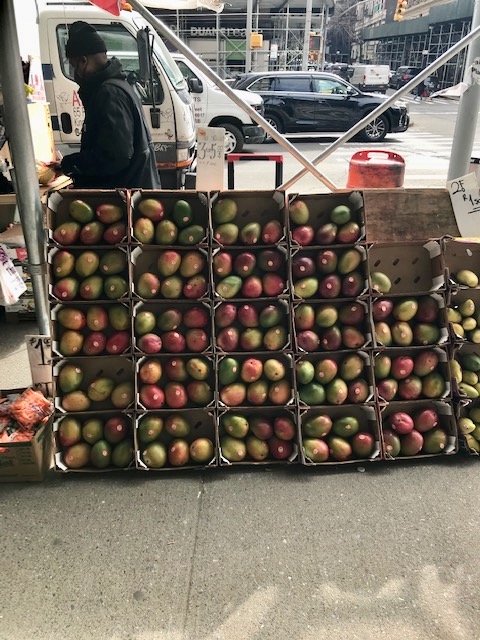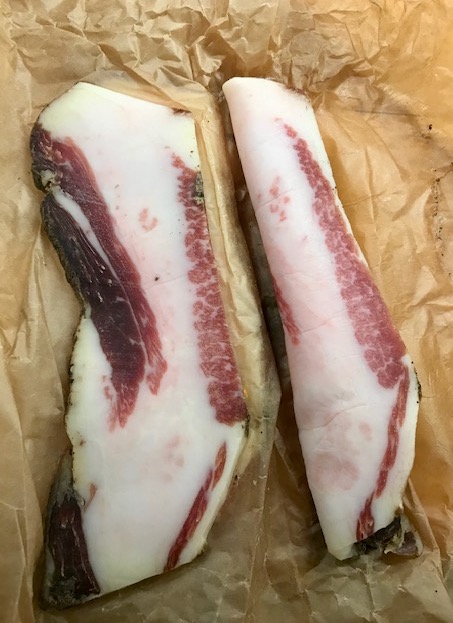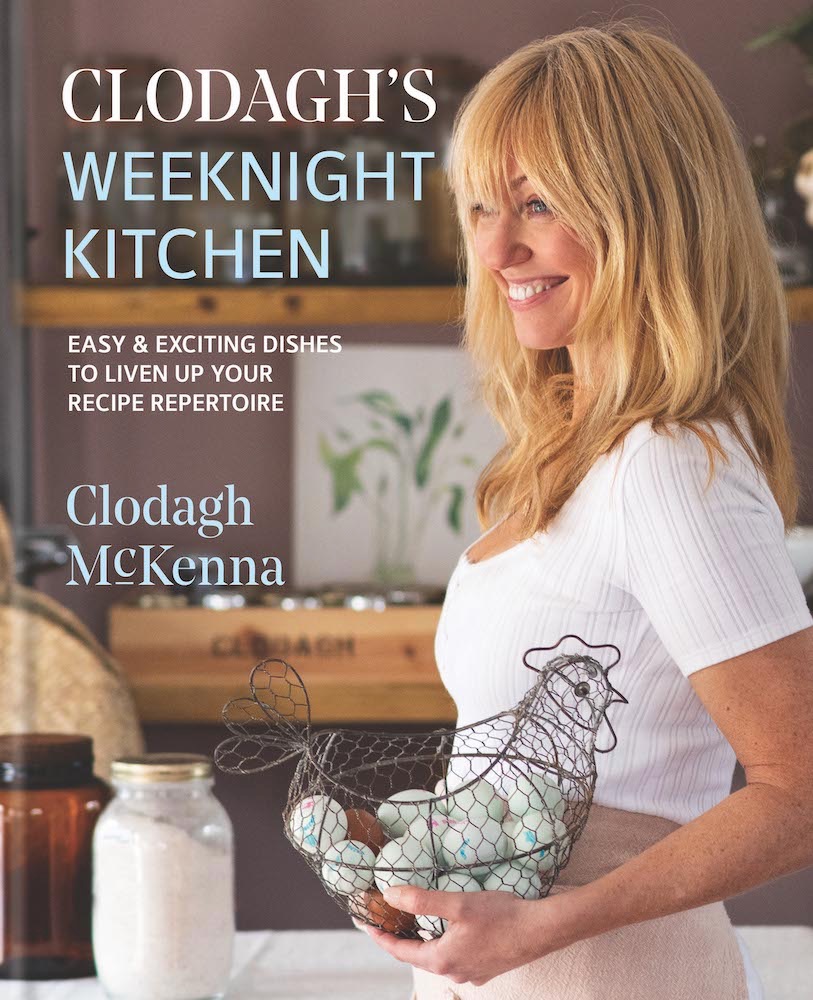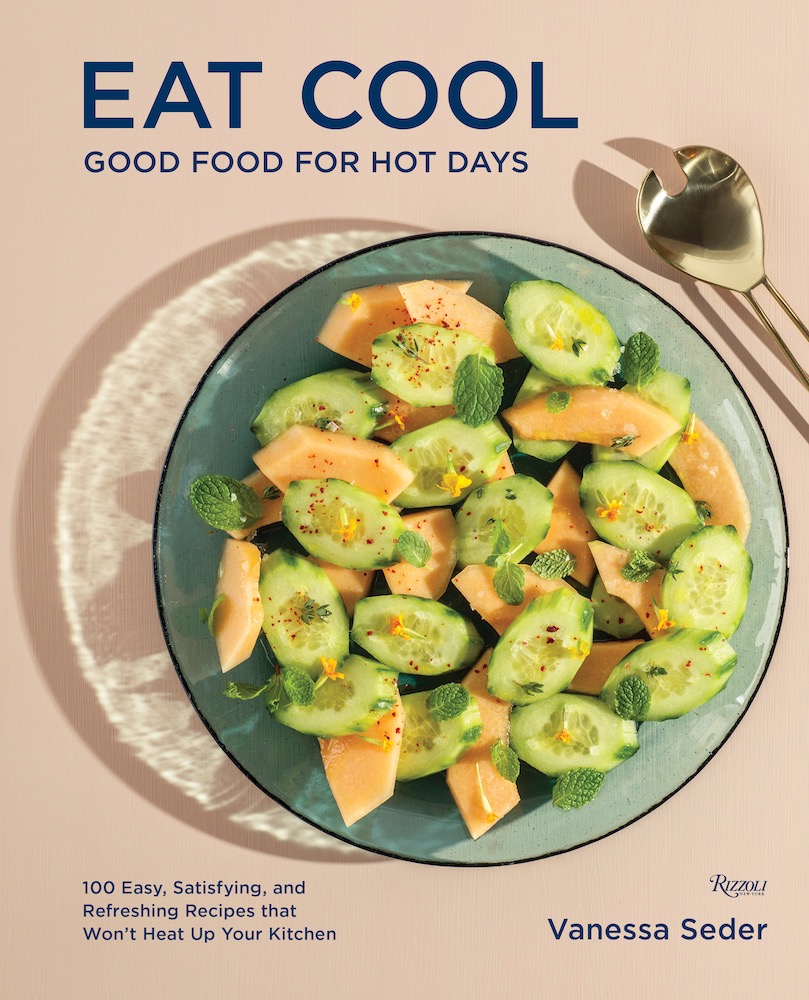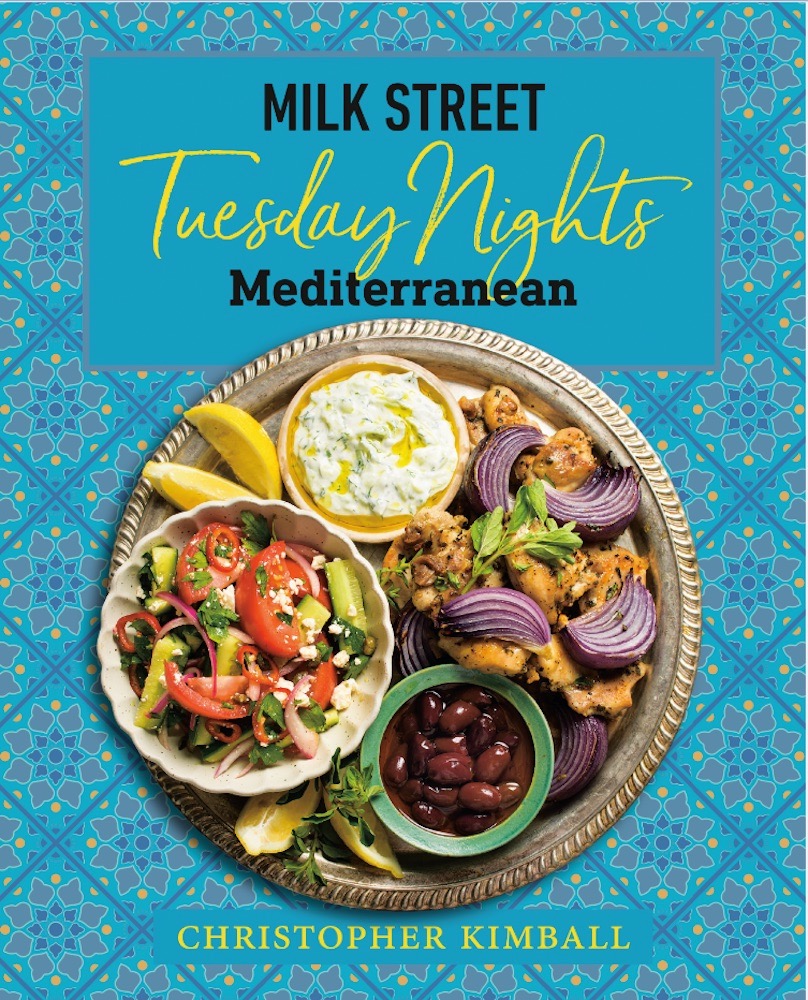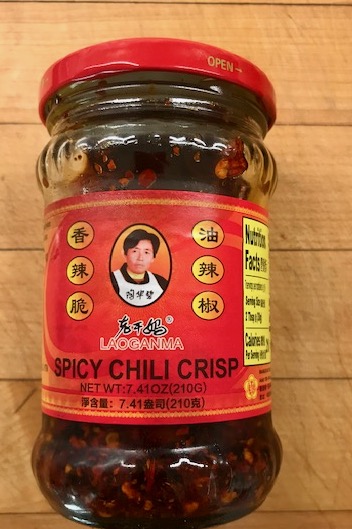My Pandemic Diary, Entry #84
Hello Fellow City Cooks,
A few days ago, I got an email from Target promoting a BOGO 50% sale on face masks. It made me think how at this time a year ago we were scavenging for PPE, hand-sewing masks out of old bandanas, and fearing for food shortages.
Like now, it was spring and the magnolia and cherry trees in the park near where I live were also exploding in full blossom and across Manhattan there were daffodils wherever there was more than a square foot of dirt. But unlike that dark time, when the park’s beauty was a cruel joke for what else nature had bequeathed, folks are now getting on airplanes and taking the subway again, Broadway (the street, not yet the theaters) is jammed with traffic, and SoHo, where I spent part of last Saturday afternoon walking with my sister-in-law who lives in that neighborhood, is down-right crowded.
All this normalcy, or at least the appearance of it, makes it easy to forget that the perils are still deadly. While it’s not yet party time, if we stay cautious and get vaccinated, we’ll get there. I personally am craving to get on a wide body and fly over the Atlantic, and short of that, to have a dinner party. At the moment, I’m doing neither but that dinner party, with vaccinated guests, will be soon.
In the meantime, I’m languishing. I still make dinner every day, mostly, but not always, because I want to. I suspect many of us are in the same place between want and need. I’ve been scanning my cookbooks more often, feeling bored by too much roasted broccoli and chicken thighs and needing some new ideas.
I’ve been receiving copies of some of the new cookbooks that publishers generously send me at this time of year (most cookbooks are released either in the spring or autumn). Besides giving us recipe ideas, every cookbook season reveals domesticity trends. I’m curious to see how Covid forced changes in home cooking and maybe from this class of cookbooks I may glean some insights. I also took a look at Amazon’s top sellers but didn’t learn much except that Keto diets are still popular and that I may be the only home cook without an air fryer. But some of the new titles, including one I’ll tell you about, were written during, and in reaction to, the worst time of the past year and invention followed.
Here are three new books that I like for their fresh ideas that can help us now while we’re still avoiding restaurants and will also make our cooking happier after we’re back to normal.
Clodagh’s Weeknight Kitchen
The first is Clodagh McKenna’s latest book, Clodagh’s Weeknight Kitchen: Easy & Exciting Dishes to Liven Up Your Recipe Repertoire* (Kyle Books, hardcover, 176 pages, photography by Dora Kazmierak, $24.99). The City Cook is lucky to know Clodagh, a charismatic chef, author and businesswoman whom I interviewed on my podcast six years ago when she published Clodagh’s Irish Kitchen*. She is dynamic, delightful, and a gifted chef and creator of happy-to-eat recipes for home cooks. While she is Irish, she lives in England on a sustainable homestead, trained and worked at the renowned Ballymaloe Cookery School in Cork, studied and cooked in France, has created and operated restaurants, and ran Slow Food Ireland before joining Slow Food at its central location in Italy for several years.
This is Clodagh’s seventh cookbook. She wrote it during, and as a personal response to, the UK’s first pandemic lock-down, when grocery shopping was a challenge and home cooking the only choice. But what she’s created is not just a cookbook for when we’re under siege. Having lived, cooked and learned from that experience, she’s crafted an approach to weeknight cooking and a collection of easy, healthy, and flavorful recipes for when we want to, or have to, cook.
I’ve been cooking from her new book for the last month, choosing from its 100 recipes. I love her voice, her encouragement, her charm, her practicality, and her delicious ideas. The book is organized in unconventional chapters: Quick Fixes (less than 30 minutes), One and Done (one-dish dinners), Meat-Free, Cupboard Stand-Bys (pantry cooking), Friday Night In (cooking for groups up to 8), and Quick & Easy Desserts. Among the recipes I’ve made so far have been 15-Minute Pan-fried Plaice with Lemon & Caper Butter (I used sole); Salmon Niçoise; Roast Pumpkin, Mozzarella & Chilli (I used butternut squash); Bulgur Tabbouleh with Grilled Vegetables (outstanding and will be superb in the summer); and Four Ways with Baked Sweet Potatoes & Hummus which we’re able to share with you. Here’s that recipe.
If you want to up your game on weeknight cooking both now and after this damn pandemic comes to an end, and do so without increasing your workload or grocery budget, Clodagh’s new book is highly recommended.
Eat Cool: Good Food for Hot Days
Next is a new book about seasonal cooking, for what Sly and the Family Stone would call “them summer days, those summer days.” Finally, a book about hot weather cooking that doesn’t begin and end at grilling.
Eat Cool: Good Food for Hot Days. 100 Easy, Satisfying and Refreshing Recipes That Won’t Heat Up Your Kitchen* (Rizzoli New York, hardcover, 240 pages, photography by Stacey Cramp, $39.95) is by Vanessa Seder. She’s a chef, food stylist, recipe developer and a teacher and all that shows in this terrific collection of meals, snacks, drinks and desserts that you’ll be happy to both make and eat, even in a heatwave.
Her 100 recipes encompass global flavors (Asian, Indian, South American, Mexican, Middle Eastern, and Mediterranean influences that she cites not only for their flavors but also as “sources of climate-savvy culinary wisdom”) and go through the day from breakfast to drinks and desserts. She declares her own criteria for her recipes, e.g.: Is it delicious and enjoyable to eat? Will it keep you cool? Can the home chef make it successfully? Besides her criteria-meeting recipes, some of her best ideas are in her single page primers on subjects like Overnight Cold Brew, Fun with a Rotisserie Chicken, How to Shuck Oysters, and Wines for Hot Weather.
The recipes are eclectic and thermometer-sensitive. For example, the chapter on soups has eight recipes, all but one being chilled, including two gazpachos and a borscht. There are a lot of salads, of course. And while there’s nothing wrong with a sliced summer tomato and mayo on white, Seder’s Toasts & Sandwiches chapter counters with Charred Broccolini, Burrata, & Walnut Pesto Tartine on Country Bread. The recipes are good enough for company, great for family or solo meals, and most can be made ahead, before the noonday sun is overhead.
I don’t usually write about desserts since I don’t eat sweets, but I know I’m in the minority on that. So when I saw Seder’s recipe for Malted Chocolate Icebox Cake, I had to ask if we could share it with you. The recipe showcases her skills and how she’s taken a childhood favorite and amped it up into a sophisticated – and no-cook – masterpiece. You could even make it mid-winter!
Milk Street Tuesday Nights Mediterranean
Cookbooks about the cuisines of the Mediterranean region aren’t new. But Christopher Kimball’s Milk Street Tuesday Nights Mediterranean* (Voracious, an imprint of Little, Brown and Company, hardcover, 304 pages, photography by Connie Miller, $35.00) is different. Showcasing traditions and culture, it combines two of my most favorite things: ways to save time when making weeknight meals, and the delicious, healthy and diverse cuisines of the Mediterranean: Northern Africa, Southern Europe, and the Levant.
Like in his first Tuesday Nights* book, named for the popular column in Milk Street’s magazine, Kimball organizes 125 new recipes based on the speed of getting dinner on the table: Fast (45 minutes), Faster (35 minutes) and Fastest (25 minutes or less), plus Salad Suppers, Hearty Vegetarian, Supper Soups, and Flat and Folded. The book’s large format means recipes are easy to read and its beautiful close-up photography is very cook-friendly. Despite the global flavors, ingredients can be easily found at most supermarkets, maybe with a rare internet purchase depending upon where you live.
The only question I had about this beautiful new book is why there are no lamb recipes. I associate lamb particularly with the cuisines of the Levant, Turkey and Greece, and it’s hard to find new ways to cook it. I know lamb is not universally popular, but it’s loved by many so maybe in some future Milk Street book it might be given a chance.
That nit aside, and with all the dishes coming from a region known for its healthy eating, many of the recipes are not meat-centric but vegetable-dominant. That’s evident in such dishes as Harissa-Spiced Pasta and Chicken with Green Beans; Green Shakshuka; Pasta with Italian Sausage, Tomatoes and Eggplant; Creamy Zucchini and Pumpkin Seed Soup; Spicy White Beans with Tahini, Lemon and parsley; and Andalusian-Style Tomato Salad with Olive Oil Tuna.
A stellar recipe we’ve been given permission to share, served on a bed of watercress or baby arugula, is a chicken dish which, thanks to a blast of high heat, is quick roasted and hugely flavorful. It’s called Chicken Salmoriglio and has origins in Calabria and Sicily. I’ve made the dish (and will again often) and vouch for its ease to cook and excellent flavor. Chicken thighs, garlic, lemon, fresh and dried oregano and a hot oven. 45 minutes from start to finish. What’s not to love? Here’s the recipe.
Cooking and Groceries
I have little to report about the impacts on grocery shopping from the rise in vaccinations. I've read a few articles mentioning the possibility of supply chain disruptions this summer as more vaccinated consumers are buying more things in general. But this should not impact our food supplies.
After a year of avoiding my neighborhood Trader Joe’s due to multiple reports about Covid cases among the staff, I’ve returned to shopping there. I shop early and wear double masks, as I do in any place with lots of people and where I don’t know what to expect. But I was happy to get back to TJ’s low prices, especially on things like nuts and power bars. Plus I had really missed their baby zucchini which I trim, drizzle with a little olive oil, and roast at 375°F for about 30 minutes until tender and then dust with Parmesan. Buying it again was like seeing an old friend. Funny, the little things that we missed.
I've been looking for new ways to cook cod. Here in New York, fresh Atlantic cod is an easily available and well-priced fish, plus it’s healthy. I usually bake it with a lemon-parsley panko crust, or sauté it with a teriyaki glaze, or make fish sticks by coating pieces in panko and sautéing in olive oil. But it gets boring. Looking for some new ideas I pulled out a 2009 cookbook I really love by Trina Hahnemann (with stunning photography by Lars Ranek) called The Scandinavian Cookbook* and found her recipe for Fish Cakes with Herb Rémoulade and Dill Potatoes. It’s simple to assemble and the binding agents are two eggs and also a little potato flour or potato flakes (only 2 T for 1 ½ pounds of fish). The rémoulade is a snap to make if you substitute Hellman’s for homemade mayonnaise. The fish cakes, sauce, potatoes, and a cucumber salad have become a favorite meal. I’ve made other recipes from this special book which is out-of-print but you can buy it used for very little.
We love pasta but try to limit ourselves to how often we eat it so when I do make it, I make sure it’s special. After watching Stanley Tucci on CNN visit Rome and taste its four classic pastas, I became obsessed with making Rigatoni all’Amatriciana (the other three are Cacio e Pepe, Grecia, and Carbonara). Mark got some guanciale, an essential ingredient for this tomato-based sauce, at Eataly and I got reacquainted with Marcella Hazan’s recipe that’s in several of her books. While spending time with Marcella’s cookbooks, I also found her recipe for fried artichokes, for which she unexpectedly advocates using frozen artichoke hearts (defrost and dry the hearts, dip in egg and dust in fine bread crumbs, sauté in olive oil until crispy). Artichokes and Amatriciana. It was heaven and should take care of my pasta cravings for at least a month.
Pandemic Tips
There was a killer frost in France that has done killer damage to as much as 80% of its most precious vineyards. Bordeaux, Burgundy, Provence, the Rhone Valley. Everywhere. What the pandemic and Trump’s tariffs couldn’t destroy, nature may have finished. I will weep in private.
I’ve been continuing to give some love to my knife collection. Over the past few months I replaced my honing steel, which I wrote about in our last Pandemic Diary and I bought a simple but effective manual knife sharpener by Chef’s Choice ($49.95 at Williams Sonoma which I liked because it has different slots for Japanese and European knives). Now I’ve replaced my knife holder. I had had a plastic one by Bodum in which you’d insert the blades into a kind of dense forest of plastic skewers. But after 10 years, the skewers had become tangled and impenetrable. Finding the right replacement was a challenge because I knew I didn’t want a magnetic wall strip, nor a wooden block, nor another Bodum, nor a drawer insert. But I suspected I wasn't the only one wanting my knives to be accessible but safe without giving up aesthetics or much counter space. I happily invested in a handsome wood, steel, and plexiglass countertop holder made by Schmidt Brothers in New Jersey.
The center core is magnetized to hold the blades securely and the plexiglass shields the blades which are inserted on both sides of the core. The plexiglass is removable for cleaning, the base is stainless steel, and it’s very stable. Plus I think it’s great looking. You can buy direct from Schmidt Brothers or from kitchenware and cutlery stores; Crate & Barrel has the best selection of finishes and sizes, plus free delivery. I bought a Black Downtown Block which holds up to 16 knives, which is more than I have, but a girl can dream.
If you’re a reader and also love to travel, I’ve discovered a charming and useful blog for literary travelers. It’s called "What’s Hot" and it’s written by an English book lover named Laura who lives in London and writes her blog while also studying to become a solicitor. It has articles like “The Best Bookstores in San Diego,” or “5 Paris Bookshops for English Books,” plus ideas for literary travel, such as “A Self-Guided Walking Tour of Literary Oxford.”
Do you ever think you’ve discovered something and then immediately you see it everywhere and you realize you're late to the party? I feel that way about chili crisp which originated in China, in Guangdong, and is now an international phenomenon due to its balance of heat and sweetness and its texture. It’s made primarily from soybean oil, fried onions, garlic, peppercorns, and chilis. It’s not 10-alarm hot but still has a big personality, is hugely versatile, and it adds crispy heat to anything from grilled cheese sandwiches to pizza, avocado toast, eggs, leftover chicken, bagels and cream cheese, stir fried vegetables, and even ice cream. You can buy it in Asian food stores, at Kalustyan’s on Lexington Avenue, and of course, at Amazon. The Lao Gan Ma brand is the most popular and the only one I’ve had but there are many others. Here’s an article from Eater with probably all you’d ever want to know about chili crisp. Or you can make your own.
I’ll finish this diary by leaving you with two different perspectives I've found helpful over this past year as we all stepped out of our pre-Covid lives, and where we may be now.
The first is an article by Tom Vanderbilt from The Guardian called “The Joys of Being an Absolute Beginner – For Life.” I know that most of us spent this year just trying to keep from losing our place, in our relationships, our lives, our selves. But some of us also seized this unexpected blank sheet of time to bake our first sourdough bread, or play an instrument, read Middlemarch or study Italian, or become a bird watcher when all the cars were gone and our cities went quiet. If you tried something new this year, or wish you did, this article may be reassuring and motivating.
The second is not new but timeless. It was published in 1815 by Wordsworth and is from his poem “I Wandered Lonely as a Cloud.” In case this year has worn you down and you are craving joy, give spring and nature a chance.
For oft, when on my couch I lie
In vacant or in pensive mood,
They flash upon that inward eye
Which is the bliss of solitude;
And then my heart with pleasure fills,
And dances with the daffodils.”
Stay safe, stay engaged, and have a nice dinner.
Kate McDonough
*The City Cook contains affiliate links whereby The City Cook may receive commissions if you choose to purchase through them. There is no extra cost to you if you use these links. The City Cook also sometimes receives free review copies of cookbooks, both hardcover and e-galleys, from publishers. There are no obligations or promises made in exchange for our receiving these books.
